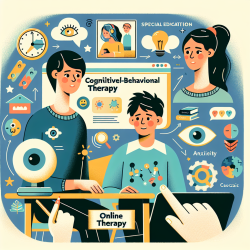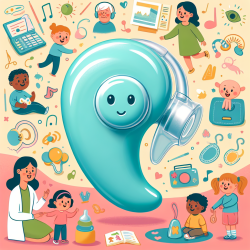Introduction
Adolescents with high-functioning autism spectrum disorders (ASD) are at a heightened risk for developing anxiety disorders, which can severely impact their social and academic functioning. Cognitive-Behavioral Therapy (CBT) has emerged as a promising intervention to address these challenges. The study "Facing Your Fears in Adolescence: Cognitive-Behavioral Therapy for High-Functioning Autism Spectrum Disorders and Anxiety" offers valuable insights into implementing CBT for adolescents with ASD and anxiety.
Understanding the Study
The study aimed to adapt a CBT program initially designed for school-aged children to suit adolescents with ASD. The "Facing Your Fears-Adolescent Version" (FYF-A) was developed, focusing on reducing anxiety severity and interference. The study involved 24 adolescents aged 13-18 who completed the FYF-A intervention, demonstrating significant reductions in anxiety symptoms post-treatment.
Key Findings
- Participants exhibited significant reductions in anxiety severity and interference post-treatment.
- Nearly 46% of participants showed a positive treatment response.
- Low rates of anxiety were maintained at a 3-month follow-up.
These findings suggest that modified group CBT can effectively reduce anxiety symptoms in adolescents with high-functioning ASD.
Implementing CBT for Adolescents with ASD
Practitioners aiming to improve their skills in treating anxiety in adolescents with ASD can consider the following strategies based on the study's outcomes:
- Incorporate Technology: Utilize devices like iPods or PDAs to engage adolescents and monitor anxiety symptoms.
- Focus on Social Skills: Develop modules that address common social challenges, such as initiating conversations and joining groups.
- Parental Involvement: Engage parents in the treatment process to support skill generalization and provide psychoeducation.
- Interactive and Age-Appropriate Materials: Use visually appealing and interactive materials to maintain adolescents' interest and motivation.
Encouraging Further Research
While the study provides promising results, it also highlights the need for further research to refine and validate CBT interventions for adolescents with ASD. Practitioners are encouraged to explore the following areas:
- Investigate the long-term effects of CBT on anxiety symptoms in adolescents with ASD.
- Examine the role of parental involvement in enhancing treatment outcomes.
- Explore the integration of technology in CBT to increase engagement and effectiveness.
Conclusion
The study "Facing Your Fears in Adolescence: Cognitive-Behavioral Therapy for High-Functioning Autism Spectrum Disorders and Anxiety" provides valuable insights into adapting CBT for adolescents with ASD. By implementing the study's findings and encouraging further research, practitioners can enhance their skills and improve outcomes for adolescents with ASD and anxiety.
To read the original research paper, please follow this link: Facing Your Fears in Adolescence: Cognitive-Behavioral Therapy for High-Functioning Autism Spectrum Disorders and Anxiety.










